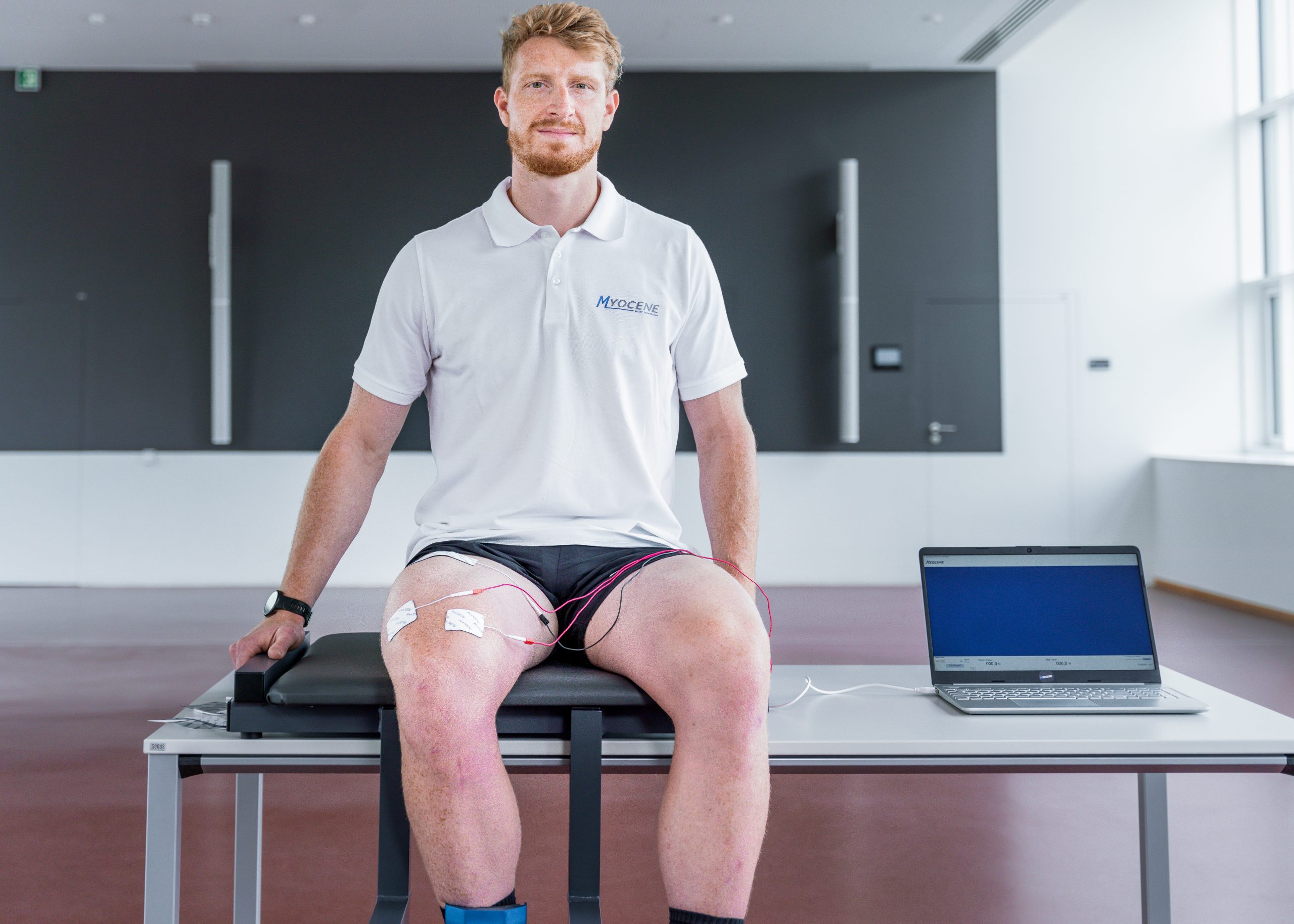Muscle fatigue is a critical factor in athletic performance, influencing decisions around training, recovery, and competition. However, traditional methods of measuring fatigue can be inconsistent and heavily reliant on the athlete’s effort and motivation. This is where Myocene, an innovative fatigue measuring device, comes into play.
Myocene quantifies muscle fatigue objectively by measuring the force response ratio at different stimulation frequencies. By calculating a metric known as Powerdex, Myocene assesses the peripheral fatigue of the quadriceps, more precisely low-frequency fatigue (LFF) or long lasting fatigue, without requiring voluntary muscle contractions, making it a groundbreaking tool for athletes, coaches, and sports scientists. Myocene is a unique device of its kind developed to assist Strength Conditioning coaches to make direct decisions on training and recovery based on objective and quantified muscle fatigue measurements.
In this blog, we’ll explore some frequently asked questions about Myocene, how it works, and its impact on athletic performance management.
FAQs About Myocene
1. What is Myocene and how does it work?
Myocene is a cutting-edge device that objectively measures muscle fatigue. The athlete sits on the device with their leg in the brace-like, custom-developed Myo-sensor. Three electrodes are set up on the quadriceps to induce electrical muscle contractions. In just two minutes, an algorithm calculates the fatigue index based on the force response of each electro induced muscle contraction.
Unlike traditional methods that rely on subjective performance tests, Myocene uses electrical stimulation to measure muscle contractility, resulting in a more accurate and objective assessment of muscle fatigue. The device calculates a unique metric called Powerdex, which quantifies peripheral fatigue without the need for voluntary muscle contractions.
2. What is Low Frequency Fatigue?
Muscle fatigue results in a reduction in the strength and speed of muscle contractions: the athlete becomes less efficient (less strength and speed) the more fatigue they have. We can immediately figure out the considerable interest in measuring muscle fatigue precisely and objectively, as it is a fundamental parameter closely linked to sports performance. Low Frequency Fatigue (LFF), also known as long lasting fatigue , is a persistent form of peripheral muscle fatigue characterized by reduced force output at low stimulation frequencies, and that can last for several days. Understanding and measuring long lasting fatigue provides valuable insights into an athlete’s muscle fatigability and recovery status, allowing for more precise management of training loads and recovery protocols.
3. How does Myocene differ from traditional fatigue assessment methods?
Traditional fatigue assessment methods often involve physical performance tests, such as jump height or sprint speed, which can be influenced by the athlete’s effort and motivation. Myocene revolutionises fatigue monitoring by using electrical stimulation to objectively measure muscle contractility. This approach eliminates the subjective factors associated with traditional methods, providing a more reliable indicator of muscle readiness and fatigue.
4. How is Myocene used with players and athletes?
Myocene is used with players and athletes to measure fatigue at different time points (pre game, pre training, post game, etc.). Unlike traditional tests, whose results are usually influenced by the player’s motivation, effort or subjective perceptions, Myocene provides non-invasive and reliable data, crucial for decision-making. Since it does not involve the player, Myocene can be used at any time even after intensely fatiguing exercises or games. Typically, in football teams for example, testing is done a couple of times a week to check the time course of recovery and ensure proper recovery according to the match and training loads. In congested periods, testing starts 24 hours and 48 hours post-match. This timeline helps determine recovery status and readiness to resume training post match. Myocene’s sensitivity to match load variations allows coaches to adjust recovery strategies, ensuring athletes are adequately prepared for subsequent training sessions or matches to avoid overtraining and injuries.
5.Why Myocene targets the quadriceps and why this muscle group is important in performance?
The quadriceps play a crucial role in enhancing performance across various sports, whether individual or team-based. Activities like running, jumping, kicking, and quick directional changes all rely heavily on the strength and endurance of this muscle group. While other muscles are also involved, the quadriceps are particularly important, and fatigue in this area can significantly impact an athlete’s overall performance.
Ready to Elevate Your Performance Management?
Myocene offers a revolutionary approach to fatigue management, providing objective, actionable data that can enhance athlete performance and reduce the risk of injury. If you’re ready to take your training and recovery strategies to the next level, we invite you to experience the benefits of Myocene firsthand.
Book a demo today and discover how Myocene can transform your approach to athlete fatigue management.



